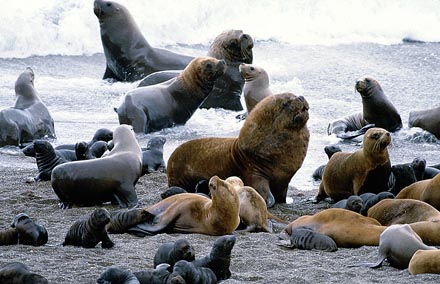
Some species of sea lion are readily trainable and are often a popular attraction at zoos and aquariums. The archetypal circus "seal" performing behaviors such as throwing and catching balls on its nose and clapping is almost always a sea lion.
Sea lions have been trained by the U.S. Navy's Marine Mammal Program, based in San Diego, to detain scuba...
[ READ MORE ]







